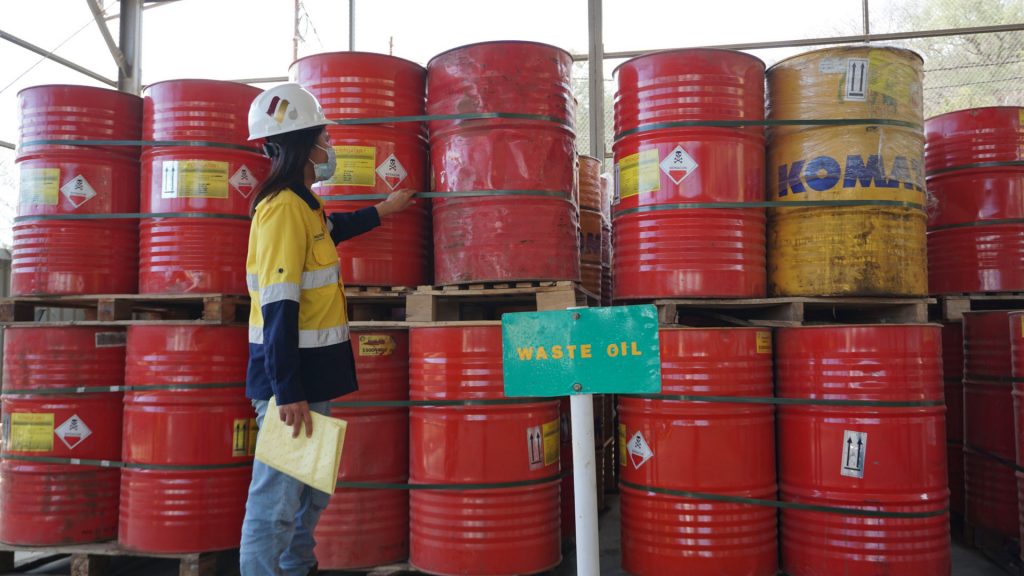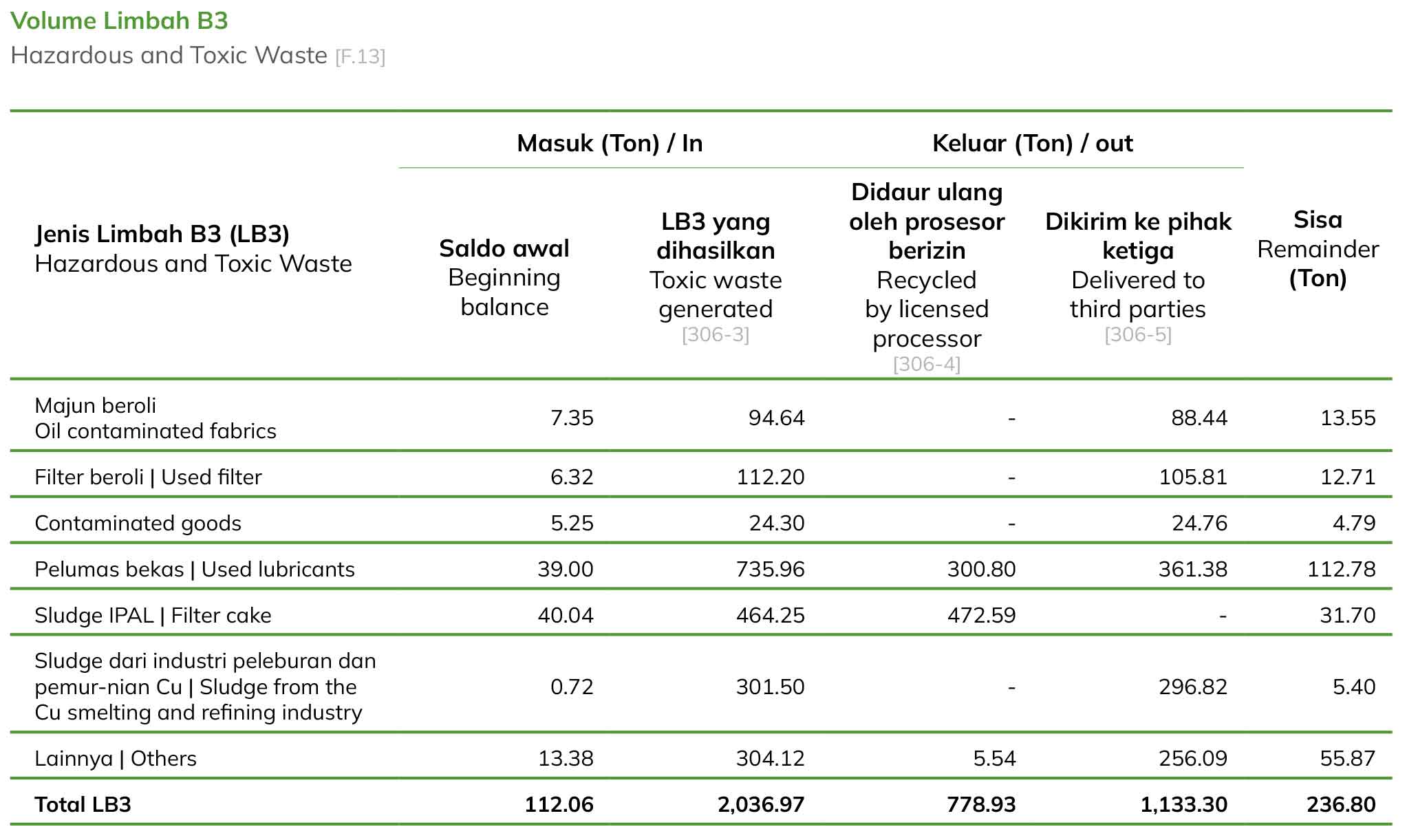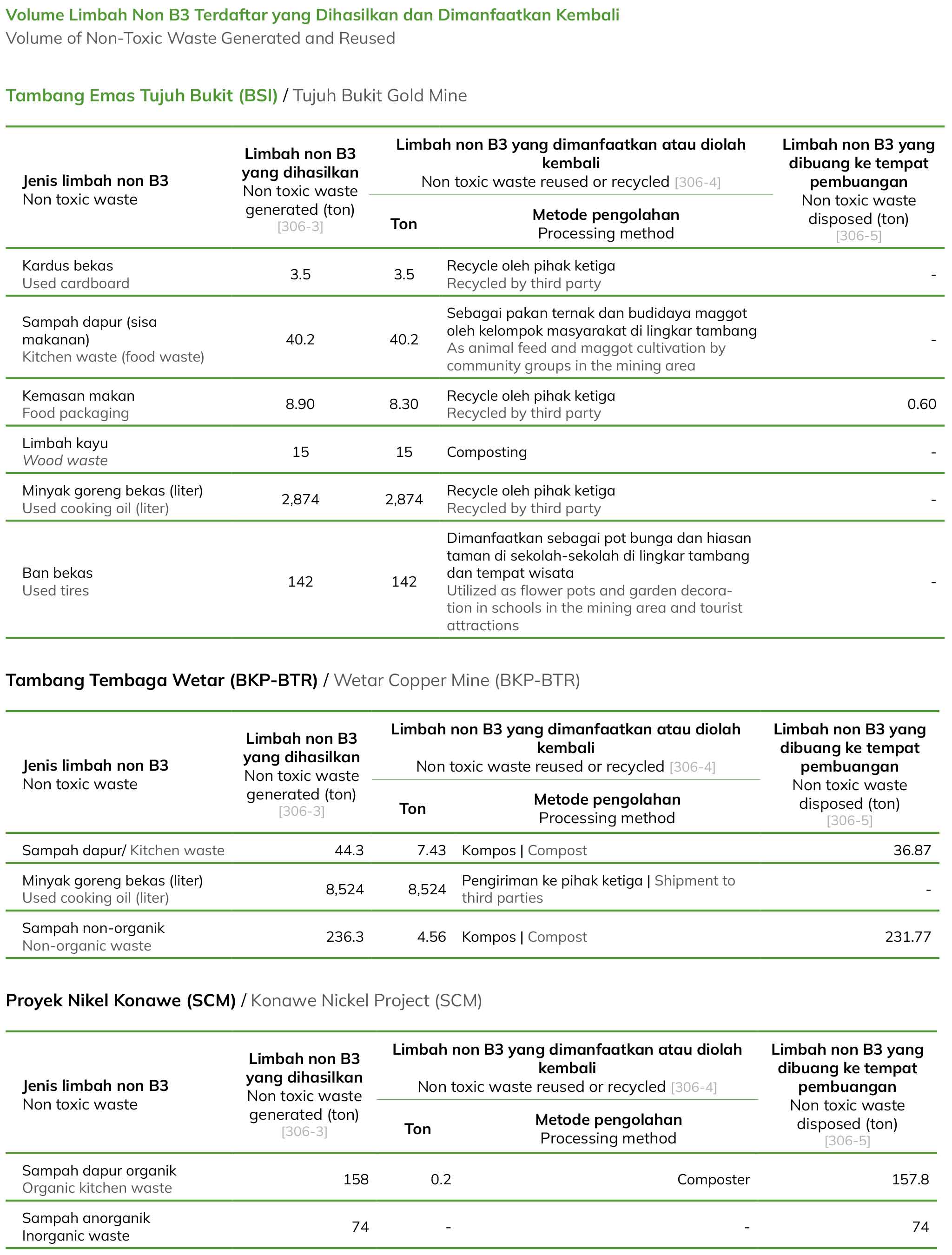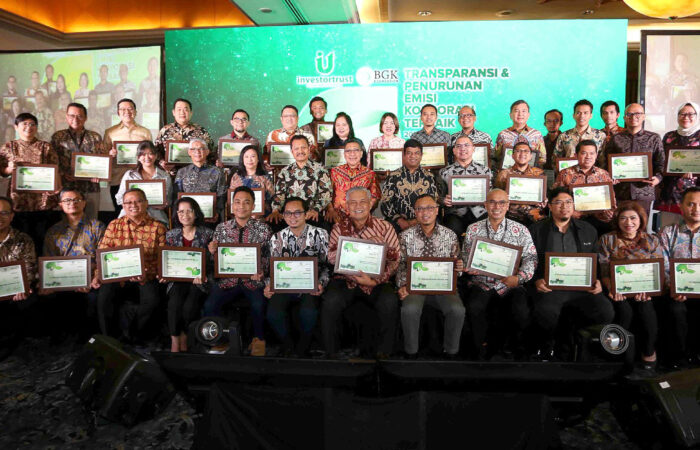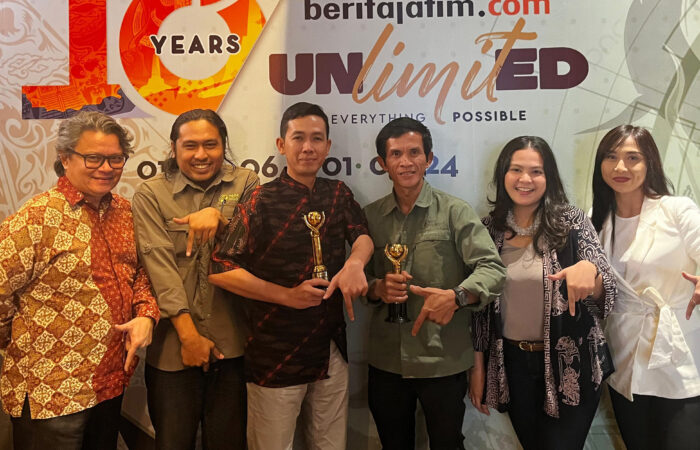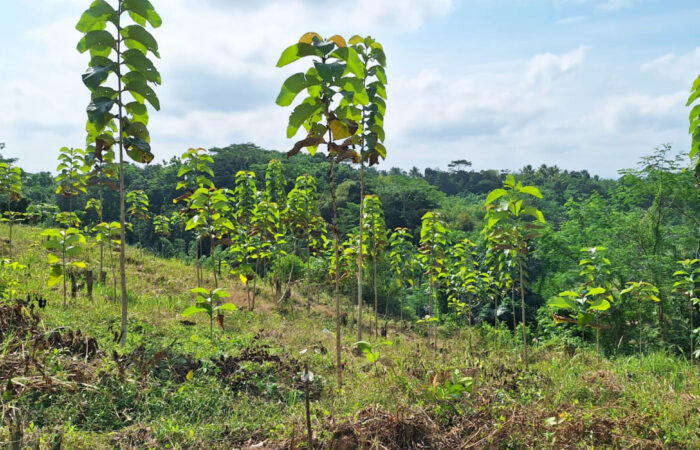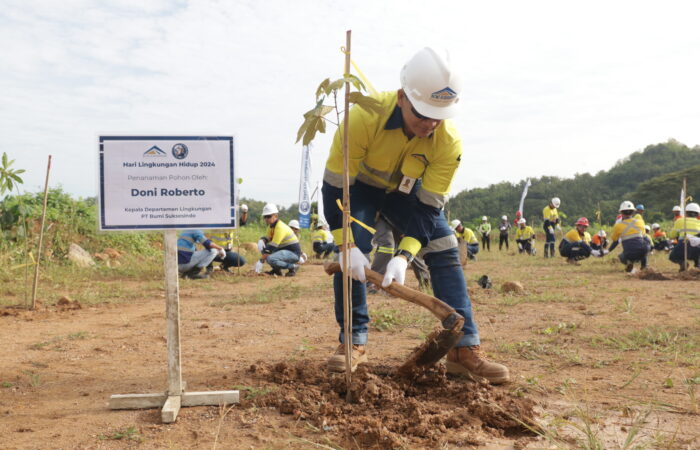

Waste management across Merdeka Copper Gold’s mining operations is carried out to prevent air, soil, and water pollution, as well as to avoid negative impacts on the surrounding communities. Waste management is conducted by adhering to the management procedures outlined in the Environmental Management Plan and the Environmental Monitoring Plan. Merdeka has established a complaint mechanism, procedures, and infrastructure in the event of waste leaks as a mitigation measure for potential environmental incidents.
In each operation, the Merdeka Group inevitably generates solid waste, which consists of hazardous (B3) and non-hazardous waste. Hazardous waste (B3) is managed by sending it to licensed treatment and utilization facilities for disposal and recycling. Non-hazardous waste, including domestic waste, is managed through the 3R (Reduce, Reuse, Recycle) program, either conducted internally by each mining operation or in collaboration with licensed third parties and the local community. All non-hazardous waste that cannot be utilized is sent to the Final Processing Site (TPA).
